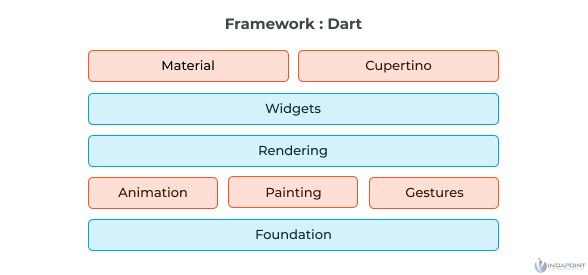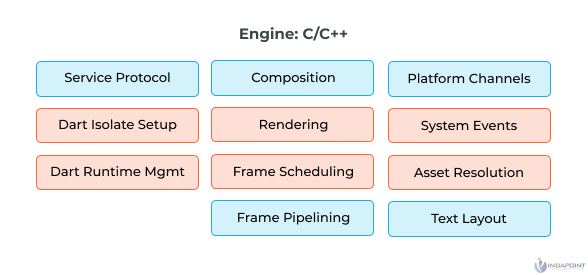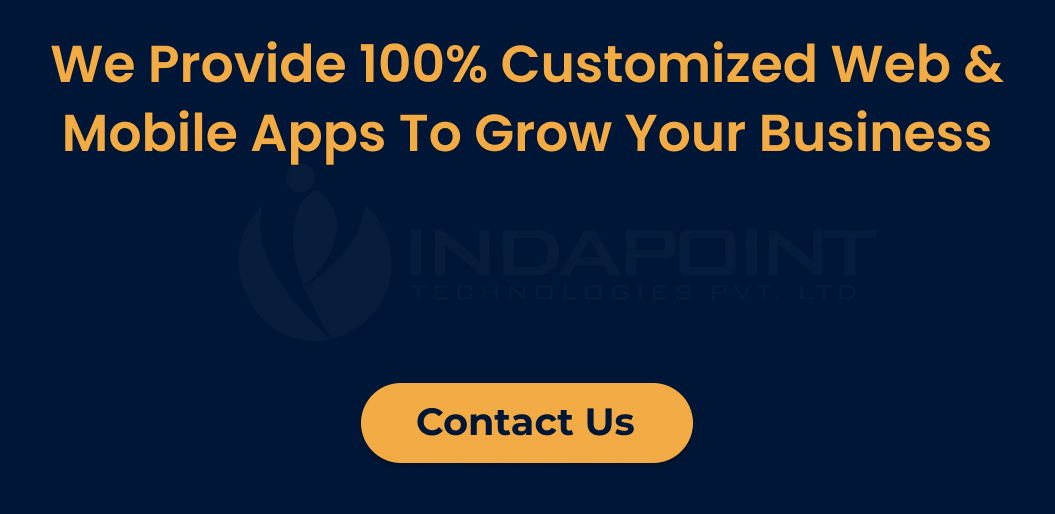Overview of Flutter Architecture to Build Apps for Any Screens
July 22, 2022

Flutter is a cross-stage UI tool that empowers applications to discuss straightforwardly with stage benefits and advances code reuse across stages like iOS and Android. The goal is to make it simple for engineers to make superior execution applications that work flawlessly across numerous locations, embracing where they are available and using as much code sharing as possible.
People in business, programmers, and tech enthusiasts have a lot of conversations about the Flutter app’s incredible animation, an assortment of widgets, and user experiences. However, they occasionally fail to grasp the nature of Flutter and the functions that its design performs.
The Flutter architecture is a blueprint that lets you take a step back and get a general idea of how the Flutter app will be divided up.
Flutter apps run in a virtual machine (VM) that allows stateful hot reloading of changes without requiring a complete recompile while in development. Applications are directly attempted to machine code, whether Intel x64 or ARM rules or to JavaScript if they center around the web before being conveyed. The structure has a vibrant environment of outsider bundles that supplement the usefulness of the central library and is open source with a lenient BSD permit.
 What is flutter app development?
What is flutter app development?
It was expensive to create apps back when Objective C/Swift, Java, and Kotlin were the main mobile programming languages.
Many frameworks for creating cross-platform apps in Javascript and HTML5 have been designed to solve this problem. Flutter frameworks have been more well-liked recently among businesses, freelancers, and cross-platform toolkits like Phonegap, Xamarin, and React Native.
The Flutter framework is fairly compact; many higher-level functions that programmers might use are implemented as packages. These packages encompass features including in-app purchases, Apple authentication, and animations. These capabilities incorporate stage modules like camera and review and autonomous stage capabilities like characters, HTTP, and movements that develop the center Dart and Flutter libraries. Some of these packages are part of a larger ecosystem.
The rest of this overview generally moves through the layers, beginning with the reactive UI development approach. After that, we go over how widgets are put together to create objects that may be shown as a part of an application. We initially give a short outline of how Flutter’s web support contrasts from different systems prior to portraying how Flutter interfaces with other code at a stage level.
Architectural Layers
There are three development layers in the Flutter architecture. The embedder is at the bottom, followed by the flutter engine and then the flutter framework.
Embedder

The work required translating how the embedded layers do the Flutter language functions with the specific operating system. To provide services like rendering surfacing, message event loop management, inputs, and accessibility.
For instance, you might create an embedder to make the Flutter run on a Play Station 5. The ability to run the Flutter runtime on your preferred machine gives fantastic potential.
Flutter Framework

It is a crucial component of the architecture of Flutter apps. The cupertino, widgets, and material portions of the Flutter framework make it the core component of application development. Since developers can easily use these Flutter framework components and Flutter only produces the content, this is the area of the Flutter architecture where most developers reside. Using pre-built widgets, animations, gesture detectors, and other components for custom programme development is simple and reliable with Flutter.
Flutter Engine

Written in C++, this Flutter engine takes on and manages the challenging rendering translations as well as network requests, input, and output in software development.
To make everything open-source, the Flutter engine serves as the hub and handles the developer’s demands. Therefore, everyone can investigate and contribute to codes. Essentially, it handles all the complicated chores that developers don’t want to encounter when building a Flutter application.
Reactive User Interfaces
The Flutter best mobile app framework updates the user experience in real time, allowing developers to quickly give a roadmap from the “app” phase to the “interface” phase. Because of this, Flutter is a reactive pseudo-declarative UI framework that enables us to reevaluate many conventional design and development ideas.
Like other reactive frameworks, Flutter approaches the conventional UI frameworks distinctively. When the developer makes even the smallest change, such as changing the color box, radio buttons, hue slider, or other elements, it explicitly decouples the user interface from its current form. With these responsive user interfaces, widgets can also specify the user interface by modifying the construct() method, which transforms state into UI.
UI = f (state)
The incredible capabilities of the flutter app development runtime, which are derived from the Dart programming language, form the foundation of this strategy.
Widgets

The Flutter app UI’s building pieces are widgets. All of the Widgets are unified into one composition unit in Flutter. Each Widget is also a recognised declaration of a UI component.
Every Widget resides in its parent, where it can learn about or understand the context from the parent. The architecture up to the root Widget was followed in this manner. You could refer to it as “the container that actually hosts the programme,” using a name like CupertinoApp or MaterialApp, for instance.
Composition
To create a powerful effect, Widgets are made up of a variety of tiny, single-purpose Widgets. As a result, the overall app vocabulary can be extremely broad and the overall quantity of design elements can be approached in a minimalistic way.
For instance, Flutter represents user interaction, drawing, scaling, placement, theming, state management, and more using the same notions (a Widget) at the Widget layer. TweenS and AnimationS are fundamental ideas encompassing the design space for the animation layer. Layouts, hit testing, painting, and accessibility are all represented using the fundamental idea of render objects. As a result, a composition can be made up of hundreds of thousands of widgets, animations, render objects, or tween types.
Drawing Model
The rendering paradigm used by Flutter reduces abstractions produced by standard cross-platform frameworks. It favors its own collection of Widgets above the standard UI Widget libraries. On the other hand, the Dart code used for drawing the images is converted into native code and rendered using Skia. Flutter includes a copy of Skia as part of the engine, making it easier for developers to update apps even when a device is using an outdated version of Android. Flutter may be set up on iOS, macOS, or Windows in the same way.
System Embedder
Instead of being converted into a comparable OS Widget, Flutter user interfaces are created, assembled, and painted by Flutter itself. On the other hand, depending on the needs of the platform, several OS participation mechanisms are used throughout the application development lifecycle. The platform embedder can be utilized in this instance because it is a development scenario.
Platform-independent Flutter engine offers Application Binary Interface (ABI) to give platform embedders a method to start using Flutter.
The platform embedder assists with an entry point when building a Flutter application. The platform embedder turns into a native OS program and hosts all of the Flutter content. It also initializes the Flutter engine, fetches threads for the user interface, and creates a texture that even Flutter can use and write to.
Due to the fact that it handles input gestures, thread management, window sizing, and platform messaging, this platform embedder bears a significant amount of responsibility for the application lifecycle. Flutter provides platform embedders for Windows, macOS, Linux, iOS, and Android.
Other versions of the Flutter architecture are available for a range of interoperability techniques for interfacing with other software. Platform channels, hosting content in the parent application, external function interfaces, rendering native controls in apps, and full-fledged web support are all included.
Final Thoughts
Using Flutter app development, businesses can quickly and affordably produce native-app-like apps that are simultaneously available on Android and iOS. As a versatile application improvement organization, we can assist you with achieving your business targets and make the best portable applications to suit your prerequisites.
Given our market presence, mechanical capacities, and client criticism, we can assist little and medium-sized ventures with growing elite execution applications with a great UI. Utilizing shudder advancement instruments, we make applications that clients see as engaging and are accessible and available quicker.






